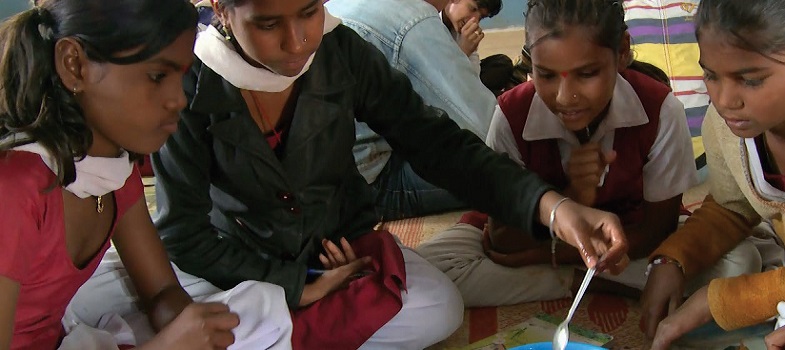Resource 2: Talk for learning
Why talk for learning is important
Talk is a part of human development that helps us to think, learn and make sense of the world. People use language as a tool for developing reasoning, knowledge and understanding. Therefore, encouraging students to talk as part of their learning experiences will mean that their educational progress is enhanced. Talking about the ideas being learnt means that:
- those ideas are explored
- reasoning is developed and organised
- as such, students learn more.
In a classroom there are different ways to use student talk, ranging from rote repetition to higher-order discussions.
Traditionally, teacher talk was dominant and was more valued than students’ talk or knowledge. However, using talk for learning involves planning lessons so that students can talk more and learn more in a way that makes connections with their prior experience. It is much more than a question and answer session between the teacher and their students, in that the students’ own language, ideas, reasoning and interests are given more time. Most of us want to talk to someone about a difficult issue or in order to find out something, and teachers can build on this instinct with well-planned activities.
Planning talk for learning activities in the classroom
Planning talking activities is not just for literacy and vocabulary lessons; it is also part of planning mathematics and science work and other topics. It can be planned into whole class, pair or groupwork, outdoor activities, role play-based activities, writing, reading, practical investigations, and creative work.
Even young students with limited literacy and numeracy skills can demonstrate higher-order thinking skills if the task is designed to build on their prior experience and is enjoyable. For example, students can make predictions about a story, an animal or a shape from photos, drawings or real objects. Students can list suggestions and possible solutions about problems to a puppet or character in a role play.
Plan the lesson around what you want the students to learn and think about, as well as what type of talk you want students to develop. Some types of talk are exploratory, for example: ‘What could happen next?’, ‘Have we seen this before?’, ‘What could this be?’ or ‘Why do you think that is?’ Other types of talk are more analytical, for example weighing up ideas, evidence or suggestions.
Try to make it interesting, enjoyable and possible for all students to participate in dialogue. Students need to be comfortable and feel safe in expressing views and exploring ideas without fear of ridicule or being made to feel they are getting it wrong.
Building on students’ talk
Talk for learning gives teachers opportunities to:
- listen to what students say
- appreciate and build on students’ ideas
- encourage the students to take it further.
Not all responses have to be written or formally assessed, because developing ideas through talk is a valuable part of learning. You should use their experiences and ideas as much as possible to make their learning feel relevant. The best student talk is exploratory, which means that the students explore and challenge one another’s ideas so that they can become confident about their responses. Groups talking together should be encouraged not to just accept an answer, whoever gives it. You can model challenging thinking in a whole class setting through your use of probing questions like ‘Why?’, ‘How did you decide that?’ or ‘Can you see any problems with that solution?’ You can walk around the classroom listening to groups of students and extending their thinking by asking such questions.
Your students will be encouraged if their talk, ideas and experiences are valued and appreciated. Praise your students for their behaviour when talking, listening carefully, questioning one another, and learning not to interrupt. Be aware of members of the class who are marginalised and think about how you can ensure that they are included. It may take some time to establish ways of working that allow all students to participate fully.
Encourage students to ask questions themselves
Develop a climate in your classroom where good challenging questions are asked and where students’ ideas are respected and praised. Students will not ask questions if they are afraid of how they will be received or if they think their ideas are not valued. Inviting students to ask the questions encourages them to show curiosity, asks them to think in a different way about their learning and helps you to understand their point of view.
You could plan some regular group or pair work, or perhaps a ‘student question time’ so that students can raise queries or ask for clarification. You could:
- entitle a section of your lesson ‘Hands up if you have a question’
- put a student in the hot-seat and encourage the other students to question that student as if they were a character, e.g. Pythagoras or Mirabai
- play a ‘Tell Me More’ game in pairs or small groups
- give students a question grid with who/what/where/when/why questions to practise basic enquiry
- give the students some data (such as the data available from the World Data Bank, e.g. the percentage of children in full-time education or exclusive breastfeeding rates for different countries), and ask them to think of questions you could ask about this data
- design a question wall listing the students’ questions of the week.
You may be pleasantly surprised at the level of interest and thinking that you see when students are freer to ask and answer questions that come from them. As students learn how to communicate more clearly and accurately, they not only increase their oral and written vocabulary, but they also develop new knowledge and skills.
Resources
